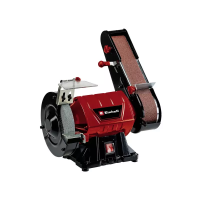© KWB – Kraft und Wärme aus Biomasse GmbH MA Multifire 08/2008 Page 43
2 System installation
Operating behaviour of the master-and-slave circuit:
The slave boiler will be requested by the master boiler, if on the master boiler
• The boiler temperature underranges the setpoint by at least the set temperature differential value,
factory setting = 5°C,
• Or if a fault is present that causes the master boiler to switch off.
This involves the following switch delays:
• On the master boiler this condition must be present for at least the duration of the switch-on delay for the power
output, so that slave boiler is requested.
• Once a request of the slave boiler has been triggered, the switch-on delay remains intact for at least the duration
of one switch off delay period after this condition has ceased to exist.
Factory settings:
(Basic settings – Outputs)
• Switch-on delay = 30 minutes.
• Switch-off delay = 60 minutes.
• Temperature differential for request of the slave boiler 5°.
Attention: In summer mode (only DHWC charging) the heat-up time of the boiler must be considered and the switch-
on delay must be adjusted to this heat-up time, so that the slave boiler does not prematurely start operation.
Cabling for the boiler master-and-slave circuit:
The boiler master-and-slave circuit, or the power output of the main boiler must be applied on the External 1 output of the
slave boiler, the boiler master-and-slave output, or the power output of the auxiliary boiler must be applied on the External
2 input of the main boiler.
2.1.10 Heating circuit expansion module (OPTION)
The system can be extended in a distributed manner via network technology with the heating circuit expansion
modules.
Mount these modules near the sensors and aggregates that will be activated by these modules!
(Example: On the heat distributor station of the respective building in the network)
Place the supply pumps, zone valves, or buffer charging pumps for distributed nodes in distributed
locations. Otherwise the 230 V activation and the bus cabling must be routed back to the respective
device.
Please note:
• Outputs: O3 – O10, relay outputs 230 VAC, 2 A in accordance with connection diagram
all other outputs are not used currently
• Inputs: I1 - I8: Analogue inputs in accordance with the connection diagram,
• Analogue input 0 – 20 mA (connection heat meters for power measurement)
• Mains connection: 230 VAC 3-pole
• LED Power: Flashes at one second intervals if voltage is applied, off for Power off, flashes rapidly if the
fuse is defective
• LED Bus: Flashes in one second intervals if the buss communication is intact
• LEDs for the outputs: Indicate whether the output is switched on.
• If the bus communication is interrupted for longer than 10 seconds, all outputs switch off
• If a defective fuse or phase is detected, all outputs switch off

